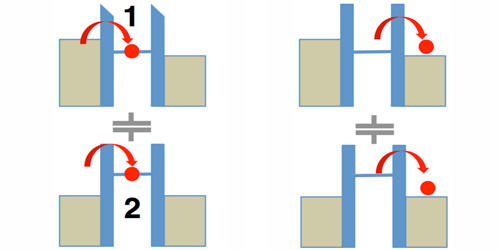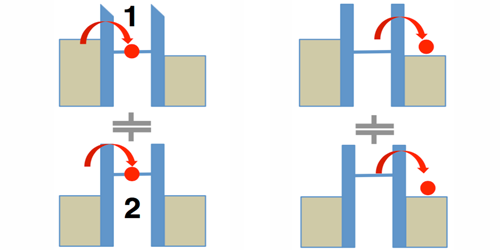Coulomb Drag in a Double Dot
Electrons moving through a conductor can induce the movement of electrons of a nearby, but isolated, conductor. This so-called Coulomb drag is well understood in 2D layered materials, but the theory for nanowires and quantum dots does not fully explain experiments. A new study of Coulomb drag in two nearby quantum dots shows that simultaneous tunneling of electrons—called cotunneling—can help explain the low-temperature behavior of the system.
Electric current flows through a quantum dot by the tunneling of electrons. When two dots are placed next to each other, the active, or lead, dot can drag current through the passive dot by a process called sequential tunneling. In this case, an electron first tunnels onto the active dot, increasing the probability of tunneling onto the passive dot. Thus the passive dot follows the active dot’s lead, but always one step behind. Sequential tunneling explains Coulomb drag observations at high temperature, but no studies have investigated cold temperatures where quantum coherence effects may play a role.
Andrew Keller from the California Institute of Technology, Pasadena, and his colleagues explored Coulomb drag at sub-Kelvin temperatures in a pair of quantum dots coupled by capacitance. The team applied a current-driving voltage across one dot and detected a drag current in the other dot, even in regimes where the driving voltage was very small. This conflicts with the sequential tunneling model, which predicts a threshold driving voltage below which the drag current should be zero. The team showed that the inclusion of cotunneling into the drag theory explains the observations. Cotunneling could be important to efforts aimed at harvesting a unidirectional current from a fluctuating voltage supply.
This research is published in Physical Review Letters.
–Michael Schirber
Michael Schirber is a Corresponding Editor for Physics based in Lyon, France.





